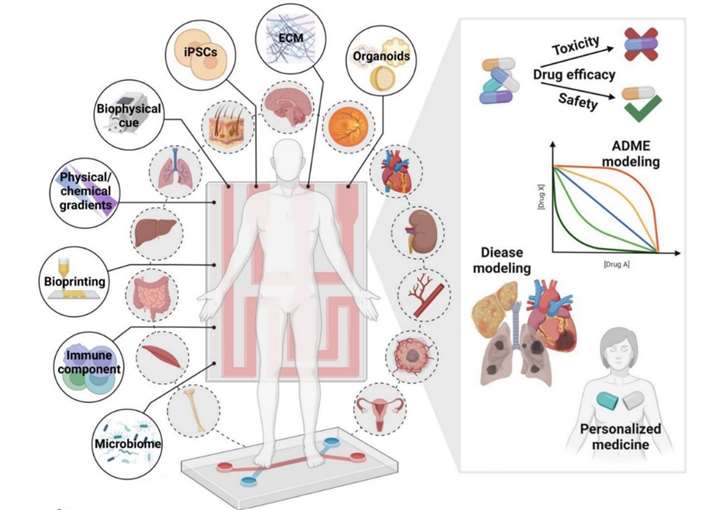Organ-on-a-Chip Platform for Drug Development
Organ-on-a-Chip technology involves the development of microphysiological systems (MPSs) that replicate the essential components of an organ's microenvironment, including living cells, tissue interfaces, biological fluids, and mechanical forces, all integrated onto a chip. These in vitro organoid models can effectively simulate both physiological and pathological activities of human organs, enabling researchers to study various biological behaviors in a controlled and observable way. Additionally, they facilitate predictions of the human body's response to different drug stimuli. The advanced human organoid model, constructed on an organoid chip, accurately reproduces the complex structure and physiological functions of human organs within the laboratory. This innovative technology yields more precise experimental data compared to traditional two-dimensional cell models and animal testing methods.
Organ-on-a-Chip technology offers several advantages, including miniaturization, integration, and low resource consumption. Additionally, it allows researchers to meticulously control various parameters within the system, such as chemical concentration gradients, fluid shear stress, cell patterning, tissue-tissue interfaces, and organ-organ interactions. The goal is to accurately replicate the complex structures, microenvironments, and physiological functions of human organs.
 Figure 1. Organ-on-a-Chip technology has been used to model nearly all human organs for purposes such as drug testing, disease modeling, and personalized medicine. [1]
Figure 1. Organ-on-a-Chip technology has been used to model nearly all human organs for purposes such as drug testing, disease modeling, and personalized medicine. [1]
Creative Bioarray focuses on developing specific human disease models and leveraging our organ-on-a-chip platform to identify new therapeutics and clinical biomarkers, promote drug development, and create novel drug delivery systems. Our organ-on-a-chip solutions offer innovative methods for culturing cells and tissues, providing precise and continuous control throughout the entire culturing process. Several chip designs are available for organ-on-a-chip experiments, tailored to the specific organs scientists wish to mimic and the experimental protocols they are using.
Single-organ-on-a-chip
Multi-organ-on-a-chip
Reference
- Deng, Shiwen et al. "Organ-on-a-chip meets artificial intelligence in drug evaluation." Theranostics vol. 13,13 4526-4558. 15 Aug. 2023, doi:10.7150/thno.87266
Explore Other Options